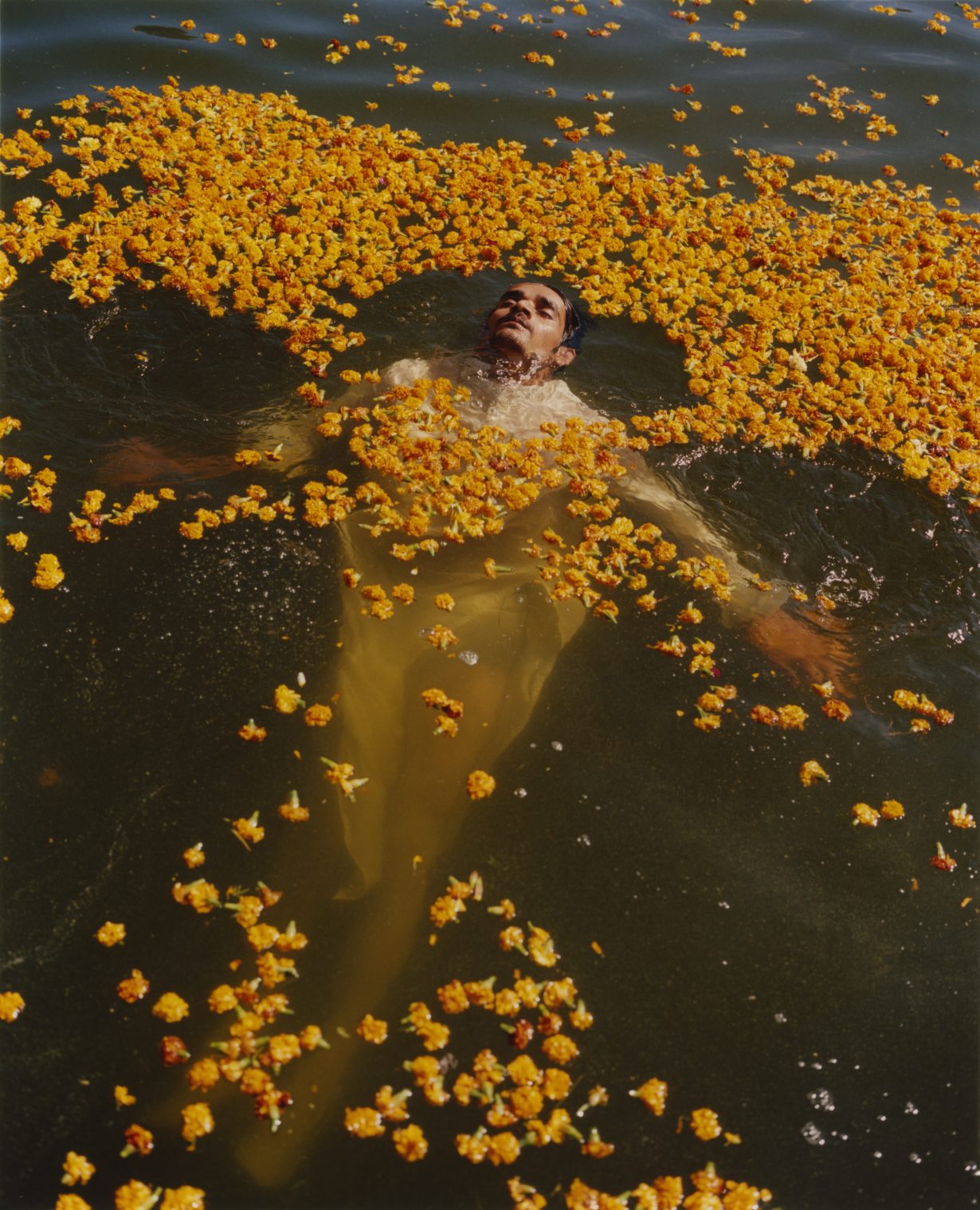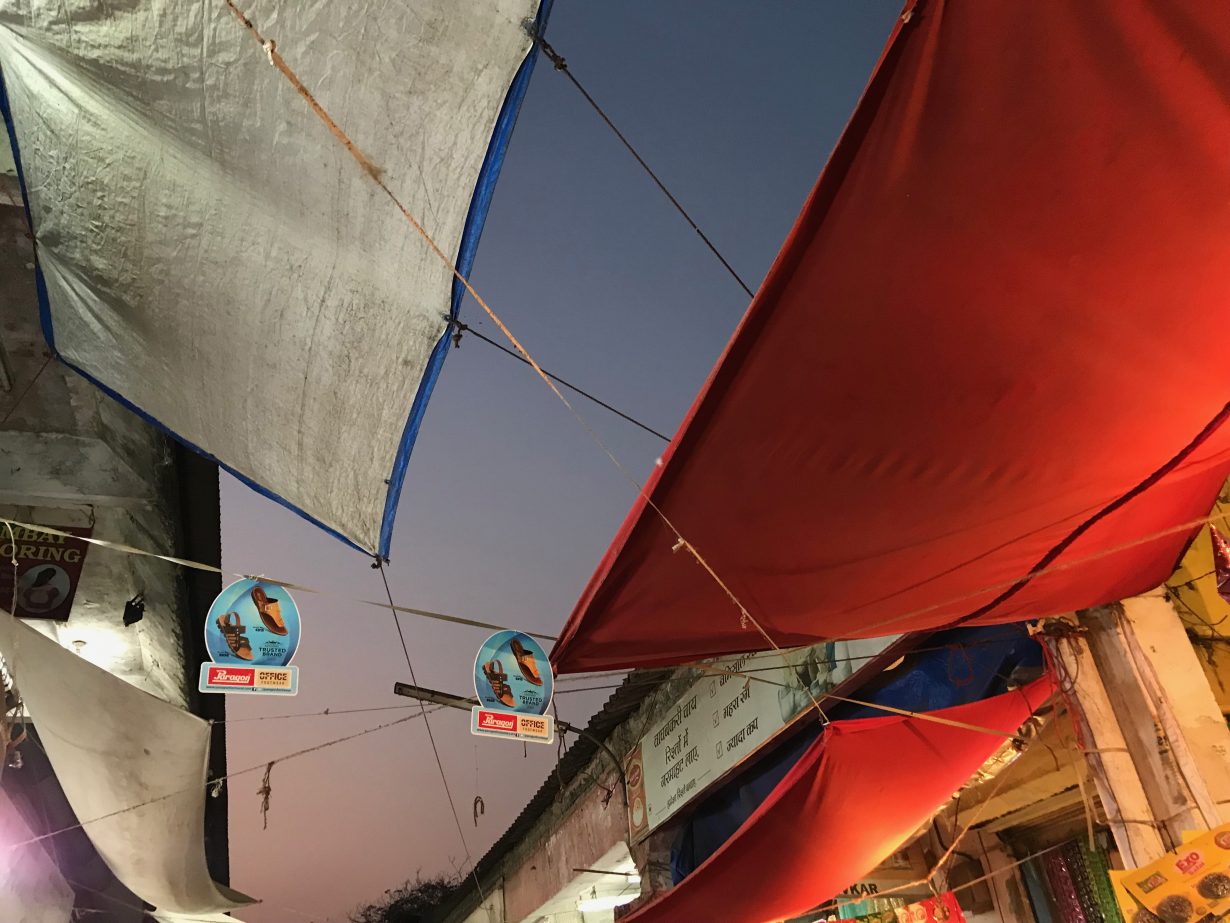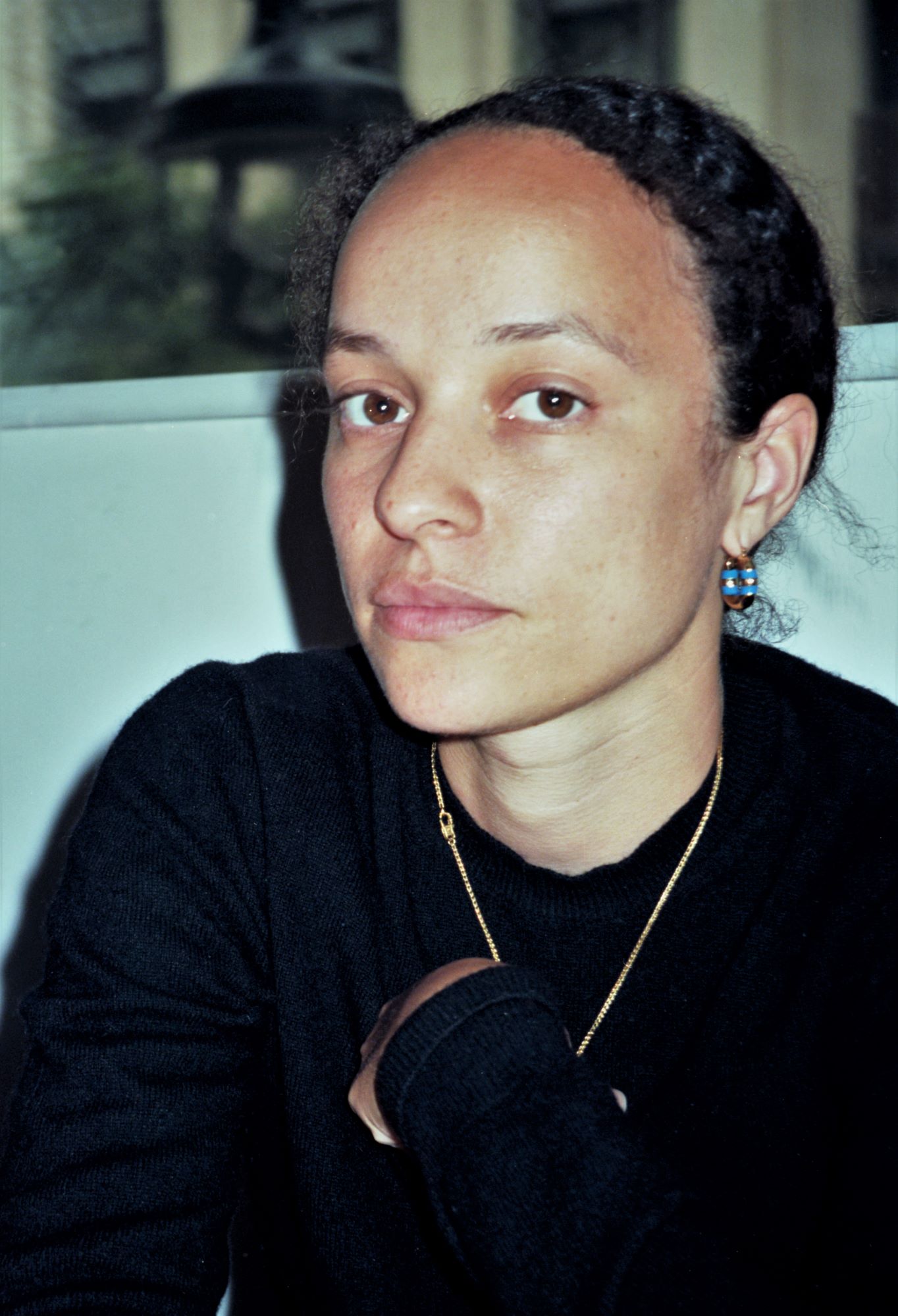“I see my research practice as an artistic and spiritual practice because when I connect with it, I’m definitely connected to a form of energy that really guides me. It isn’t me doing something proactively; it’s intuitive and I’m moved to do it”
When Grace Wales Bonner debuted her eponymous label’s Autumn/Winter 2019 collection at London’s Serpentine Galleries, her garments were accompanied by invocations and artworks. Incantations by Nigerian writer Ben Okri were printed on the walls. Installations, photographs and other works, by the likes of David Hammons, Kapwani Kiwanga, Paul Mpagi Sepuya and Wales Bonner herself, were arranged in independent clusters throughout. The collection, titled ‘Mumbo Jumbo’, after Ishmael Reed’s 1972 historical-fiction book of the same name, infused expertly tailored classic American collegiate silhouettes (varsity jackets, polo shirts, turtleneck sweaters, wide-breasted blazers) with mystical insignia and talismanic jewellery (palm charts, crescent moons, feathers, bead- work), harkening back to traditions of West Africa and the Caribbean. All in all, this fashion show was closer to something in the lineage of Fluxus performances than a straitlaced catwalk – and it marked the culmination of her interdisciplinary collaborative exhibition Grace Wales Bonner: A Time for New Dreams.
Wales Bonner, a thirty-three-year-old London native, graduated from Central Saint Martins in 2014 and made a name for herself as a defining force in fashion immediately thereafter. Like the pieces presented in ‘Mumbo Jumbo’, her garments gained a reputation for their high-quality execution as well as their genre-spanning cross-cultural references. But as she’s grown, so too have her modes of expression. ‘Grace is a fashion designer, but she’s also a thinker, a writer, an editor. She makes connections between different fields, from music to art,’ Hans Ulrich Obrist told Vogue in 2019.
Through artworks, clothing, performances and literature, Wales Bonner’s show at the Serpentine explored the idea of magical resonances within Black cultural and aesthetic practices across the Atlantic, placing a specific focus on the shrine as a way to connect with different worlds and possibilities. It reflected two of the major recurring motifs throughout her practice: intergenerational Black diasporic artistic production and the potential forces of spiritual realms. Through ephemeral activations – including workshops hosted by the musician, mystic and laughter-meditation practitioner Laraaji and a one-night performance programme entitled Devotional Sound with the musician Sampha, among others – she also presented music as a potent medium to embody such topics.
This month Wales Bonner is opening her second exhibition, Artist’s Choice: Grace Wales Bonner – Spirit Movers, at the Museum of Modern Art in New York, and publishing her first book, Grace Wales Bonner: Dream in the Rhythm – Visions of Sound and Spirit in the MoMA Collection, both of which are rooted in themes similar to those explored in the Serpentine show. The former features around 50 artworks from MoMA’s collection, selected by Wales Bonner following years of research, by artists spanning generations, geographic locations and mediums, from Park Seo Bo and Lee Ufan to Pope. L and Betye Saar to Man Ray and Agnes Martin, united by their artistic tendencies to evoke multiple histories and Wales Bonner’s intention to inspire new connections. The latter, meanwhile, offers around 80 images and poetic expressions by the likes of Lynette Yiadom-Boakye, Langston Hughes, Greg Tate and the artist herself, also exploring ideas of spirituality and Black cultural production, albeit primarily through the lens of music and the transliteration of sound.
Ahead of the show’s opening, Wales Bonner spoke with ArtReview about archival research as a spiritual and artistic practice; what drew her to the work of Benjamin Patterson, one of the founders of Fluxus; and everything that can make a spirit move.

Imaginative Space
Artreview: How long have you been working on this exhibition?
Grace Wales Bonner: COVID slowed certain things down in terms of scheduling, but it’s been in development for a couple of years and certain themes that I’m exploring are timeless within my own practice. There’s a sense of familiarity or consistency in the themes.
AR: We’ll come back to some of those recurring themes, like spirituality and musicality, but first, I’m curious to know how your specific research projects begin and end.
GWB: I’ve tried to create a space within my own research practice, which I see as an artistic practice, as a place for continuity; for themes
to be explored without a specific outcome in mind. I start to amass material across disciplines, and it starts to create some kind of vision of a world. I’ll be inspired by that certain world that comes together, and then it becomes technical and specific to a medium. So, if it’s
in design, for example, I’ll start thinking about colour, material and silhouette. With the publication for this exhibition, MoMA’s photographic archive was the starting point. Then literature and poetry came hand-in-hand with exploring that archive and finding language to express something between the images.
AR: Speaking of the book, Dream in the Rhythm, there is a strong sense of musicality associated with it. Of course, there is no sound in a printed publication, but there are numerous photographs of people dancing or playing instruments, which, especially through their blurs, exude a sense of movement and sound. There are also Lee Friedlander’s portraits of Miles Davis, artworks concerned with composition like Mieko Shomi’s < wind music > [1963] and poems and texts that attempt to transliterate sound in a way. Excerpts like ‘Be Bop / Diz / OoBlahDee / Ooolyacoo / Bloomdido / OoBopShabam’ from Amiri Baraka’s Speech #38 (or Y We Say It This Way) or Quincy Troupe’s ‘bebop, bebop, beedoo beeboli, doodle-li, bebop, bebop’ in Words That Build New Bridges Toward a New Tongue [2002] come to mind.
GWB: I’m really interested in how sound is captured or translated through other mediums, whether it’s photography or the written word. How music is rendered in different ways is an ongoing form of exploration, something I always come back to, even in my collections. There’s a sense of mystery and possibility around it that I feel is a space with a lot of creative and imaginative potential. And that’s the space I like to operate in: the imaginative space around an idea or a translation. The medium of a publication was a way of exploring that theme specifically through a photographic collection and poetic expressions. I was interested in poetry as a form of expression that has a porousness or potential ambiguity. There’s a looseness in that form, and I like to keep gaps between connections. It’s about maintaining this imaginative possibility.
AR: That even comes through in the amount of negative space within the book. There are many blank pages, and sometimes a two-page spread has only one very small image in a corner or a few lines of text. This leaves a lot of room for thinking about what’s presented.
On a Sonic Journey
GWB: There was an intention to reflect a composition and a sonic journey [in the design]. It’s also thinking about rhythm and musicality, and a way of experiencing sound and intonation. There may be times of intense sound and repetition, and there may be times that are quieter and more reflective.
AR: I want to come back to music, but before that, I’d like to talk about spirituality, which is also a recurring theme in your practice. The exhibition features such a vast array of artists working across many different mediums. While some, like Betye Saar, are known for very mystical or spiritual works, others, like Jean Arp, aren’t really associated with any kind of spiritualism. With that in mind, what does the title of the show, Spirit Movers, mean to you?
GWB: It means different things, and I want to leave space for interpretation within it, but I’m interested in what can move through material. It’s about an impulse that someone could have that could move them to organise material in a way that could have a magical potential. One way of looking at it is thinking about channelling something through a practice – whether that’s painting and the repetitive act of it, or the act of assembling sculptures, or meditating on the works that you’re creating. Then there is also an interest in movement, gesture and the potential of performance. The articulation of sound and movement through material is also something that I’ve been interested in. These are all things I was thinking about with the title.
AR: In other interviews, you’ve talked about art as a form of spirituality and the act of conducting archival research as a spiritual practice. Can you tell me more broadly about your interest in the spiritual, or spirituality, in relation to your artistic practice?

Moved to Do It
GWB: I see my research practice as an artistic and spiritual practice, because when I connect with it, I’m definitely connected to a form of energy that really guides me. It isn’t me doing something proactively; it’s intuitive and I’m moved to do it. With research processes and looking specifically at photography – which is something I’m really drawn to; I have a massive collection of images – I’m recollecting or maybe even seeing things that different generations would’ve seen. For example, I have continued to be drawn to certain earthen, rustlike tones in my design, and I thought these colours were my choice. It was seemingly conscious, and seemingly me being in control, but I later realised not necessarily: they are colours that my ancestors were specifically exposed to; blossoms in those tones were really present in the areas around the Rio Grande river in Port Antonio [in Jamaica, where Wales Bonner’s father is from], and they particularly stood out amongst dark green foliage.
AR: There are several works by Benjamin Patterson, a formally trained musician who became one of the founders of Fluxus, in the exhibition and a few photographs of him performing in the book, too. He has described his own work as ‘expanded music’, which seems to resonate with your practice. What drew you to his work?
GWB: I’ve been drawn to people who have a sense of mystery about them, who don’t necessarily reveal everything about themselves, and then their work is very seductive and draws you in. The ambiguity and the crossing over into lots of different spaces and being inventive around form [drew me to him]. I think the humorous aspects of his work are also interesting.
AR: I actually wanted to ask about humour, because a lot of people who you work with and cite as influences – Patterson and Ishmael Reed among them – use humour and satire, but your own work doesn’t seem
to be humorous. Am I missing something? Is humour something you think about?
Disrupted by Humour
GWB: You’re probably not missing anything, but within my early collections there is a playfulness. There are subtle disruptions within classical forms. I’m interested in working within frameworks and slightly going off the framework but in a way that can still be familiar. In her poem ‘Ego-Tripping (there may be a reason why)’, which is included in Dream in the Rhythm, Nikki Giovanni says, ‘I am so hip even my errors are correct’. I think there’s this sense of being able to be playful or flexible that’s very powerful; there’s a real power in that action. So, being disruptive in some way is definitely something that I think about.
AR: If you think about Patterson’s work, he did use humour as a point of disruption. I can see that you’ve done that through more subtle or playful twists. For example, when you reinterpreted Dior’s New Look – one of the most iconic silhouettes in fashion history – you used raffia to trim the sleeves and pockets of a classic black blazer with soft red, green, yellow and white stripes and florals, a nod to Caribbean colours and handcraft.
GWB Yeah, I probably did this more in my earlier collections than what I am doing in an institutional context, although I am still highlighting, quite clearly, that kind of mentality. But [for the works selected for the MoMA show] I think I’m connecting most to how the work moves me, like I’m disrupted by the work. I’m moved by the work. There’s something in the works stirring something in me.
AR: Can you give an example of a work in the show and what it stirred in you?
GWB: There’s a Mathias Goeritz work, Message Number 7B, Ecclesiastes VII: 6 [1959; a wood panel covered with gold metal foil, oils and iron with countless nails hammered through, pointing out at various imposing angles, almost like the interior of an iron maiden]. I saw it in storage, and the work very much had a strong impression on me. It was quite startling. It’s almost scary, kind of assaulting. There’s an element of danger in the work, and there’s a layer to this theme [of spirit movers] that it is not all gentle. You could think it’s a very gentle, poetic, calm environment, but there is a danger or intensity about this kind of human experience as well. There are extremes within it, and it was interesting to embrace that through his work.
AR: Zooming out, how would you describe the evolution of your practice since graduating from Central Saint Martins?
GWB: I’ve always been very interested in identity and representation, and a lot of what I read was translated through the clothing and the images I was creating. When I graduated, I embraced design as the most effective mode of communication, but over time this practice has evolved. I’ve been able to find more specific outlets for different ideas. I understand what can be expressed within a collection, and I also understand the limitations of doing a collection every six months. Whereas when I’m thinking about an exhibition over two years, I’m thinking about a different temporality and a different way of experiencing ideas. Working on publications is another outlet. But everything comes from this artistic research practice that I’ve been creating the space for and that doesn’t need to have any outcome. Being able to have very specific avenues for ideas is really important, and it is a foundation that I’ll continue to build from.
Artist’s Choice: Grace Wales Bonner–Spirit Movers is on view at MoMA, New York, through 7 April
